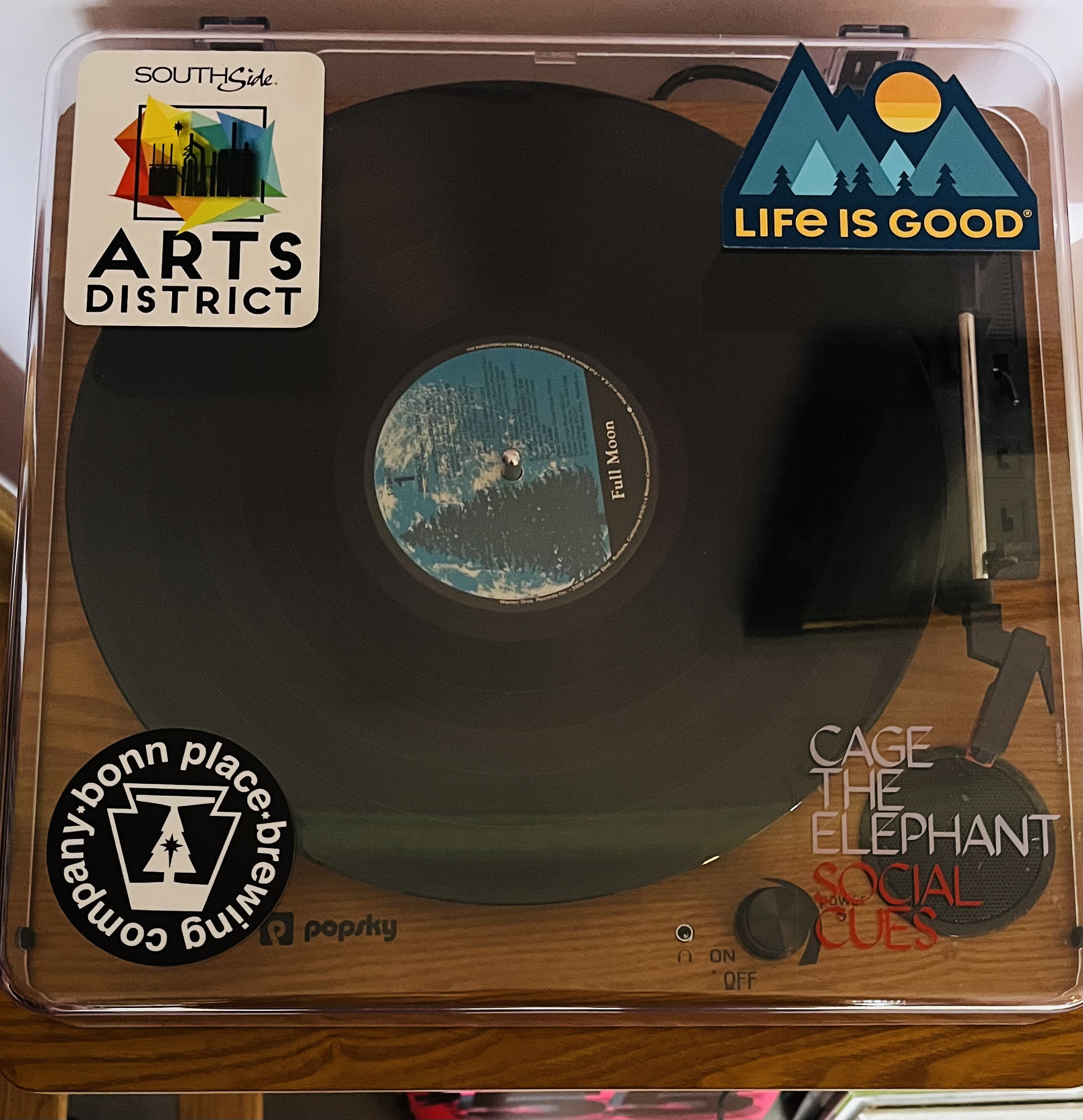DIY Felt Muffler Rail
Creating a DIY Felt Muffler Rail
As a piano player, it can be hard for me to keep my hands off the keys for long periods of time. When I received complaints from my family members about the loudness of the piano while they were working from home, I decided to take matters into my own hands and reduce the volume. Since my family’s parlor piano is acoustic, there is no volume control (see below). I decided to immitate the felt muffler rails that I have seen in upright pianos.
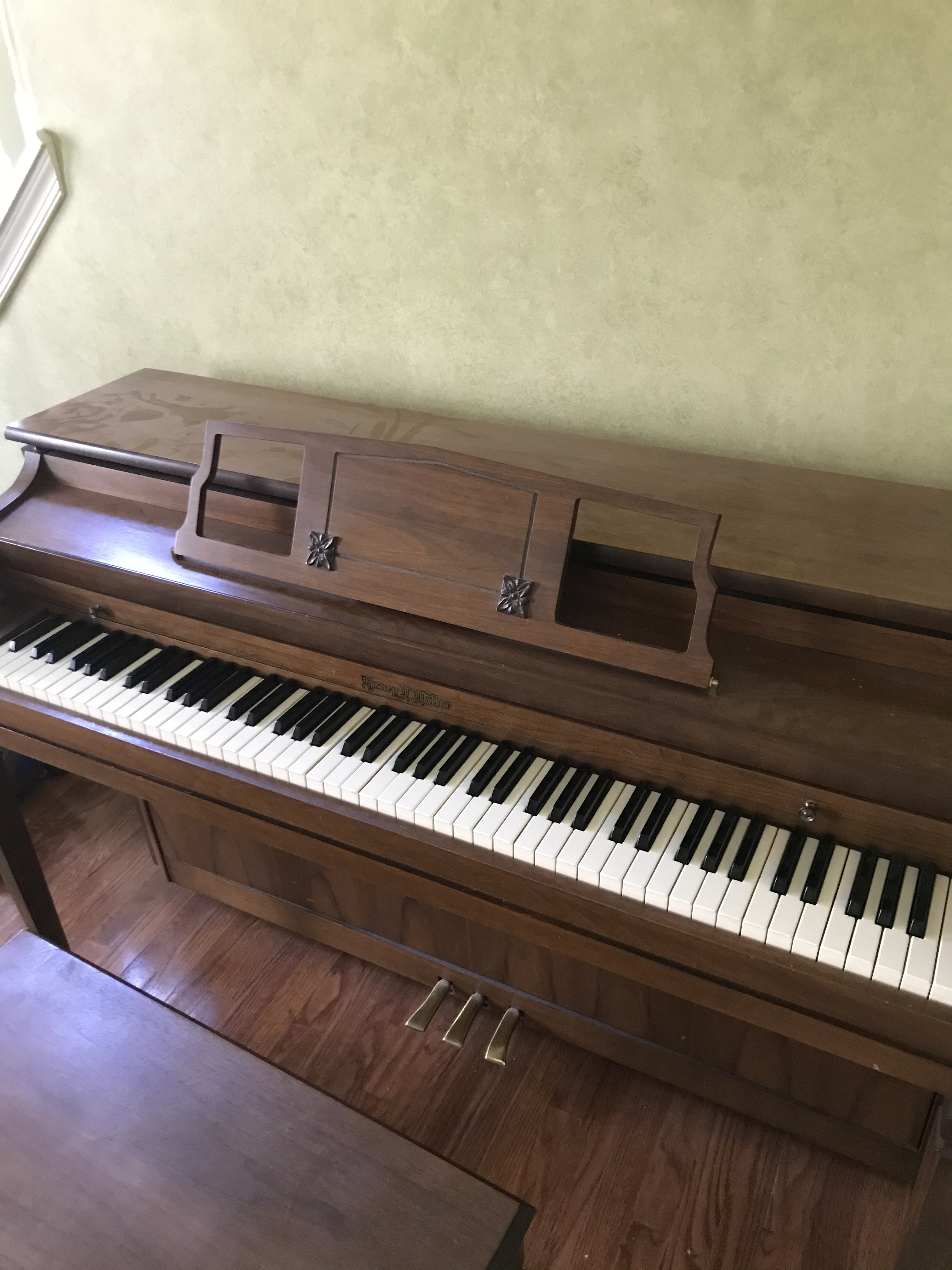
Prototype
To begin with, I had a small amount of felt, cardboard, a stapler, and my imagination. After measuring the length of the hammers inside the piano, I cut the felt strips to length. By laying them across the hammers, I could get an idea for where they would need to be attached to the rail and to the interior of the piano cabinet.
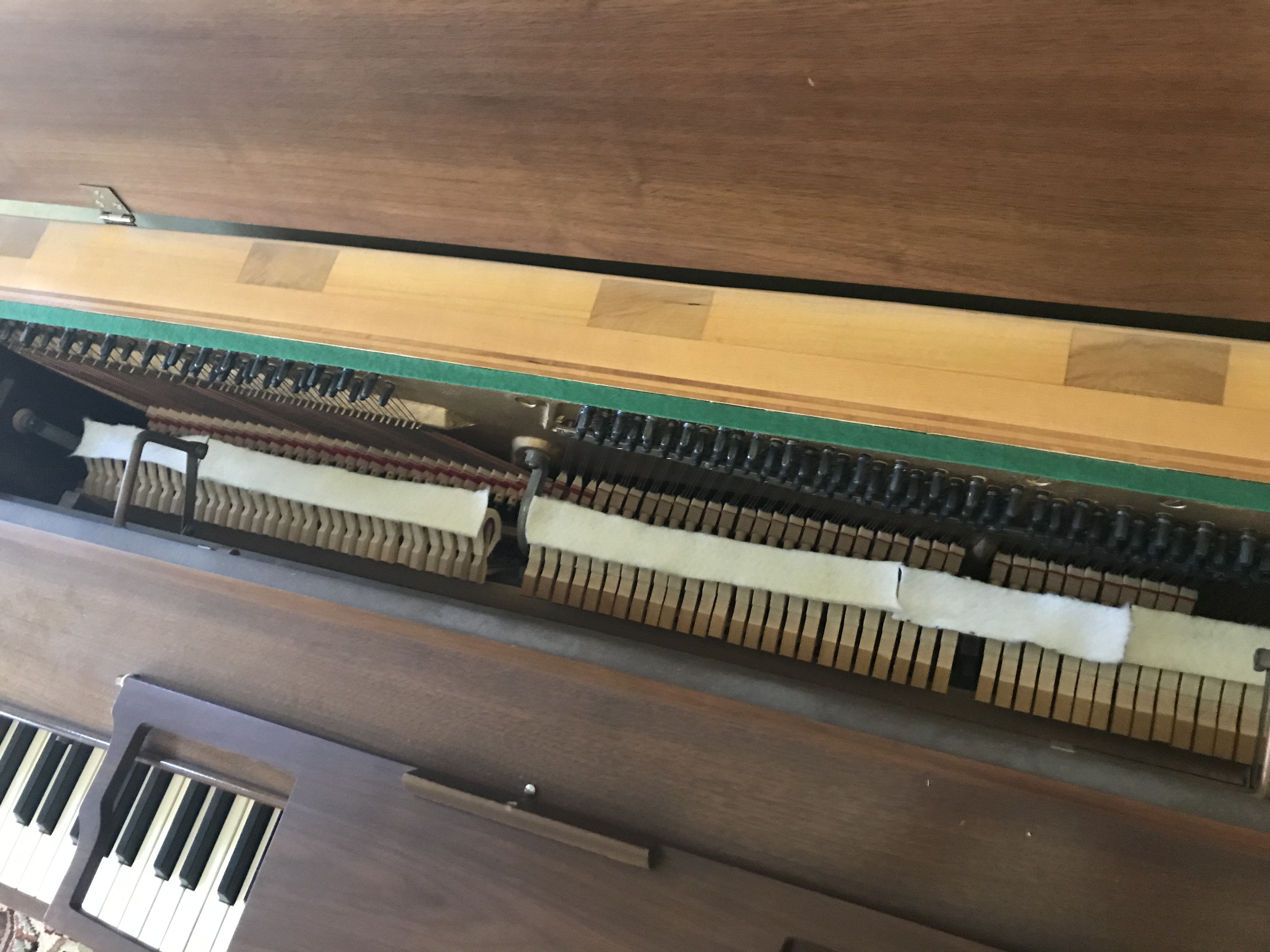
I stapled together the whole assembly and taped it into the rough position that I would want everything to go inside of the piano:
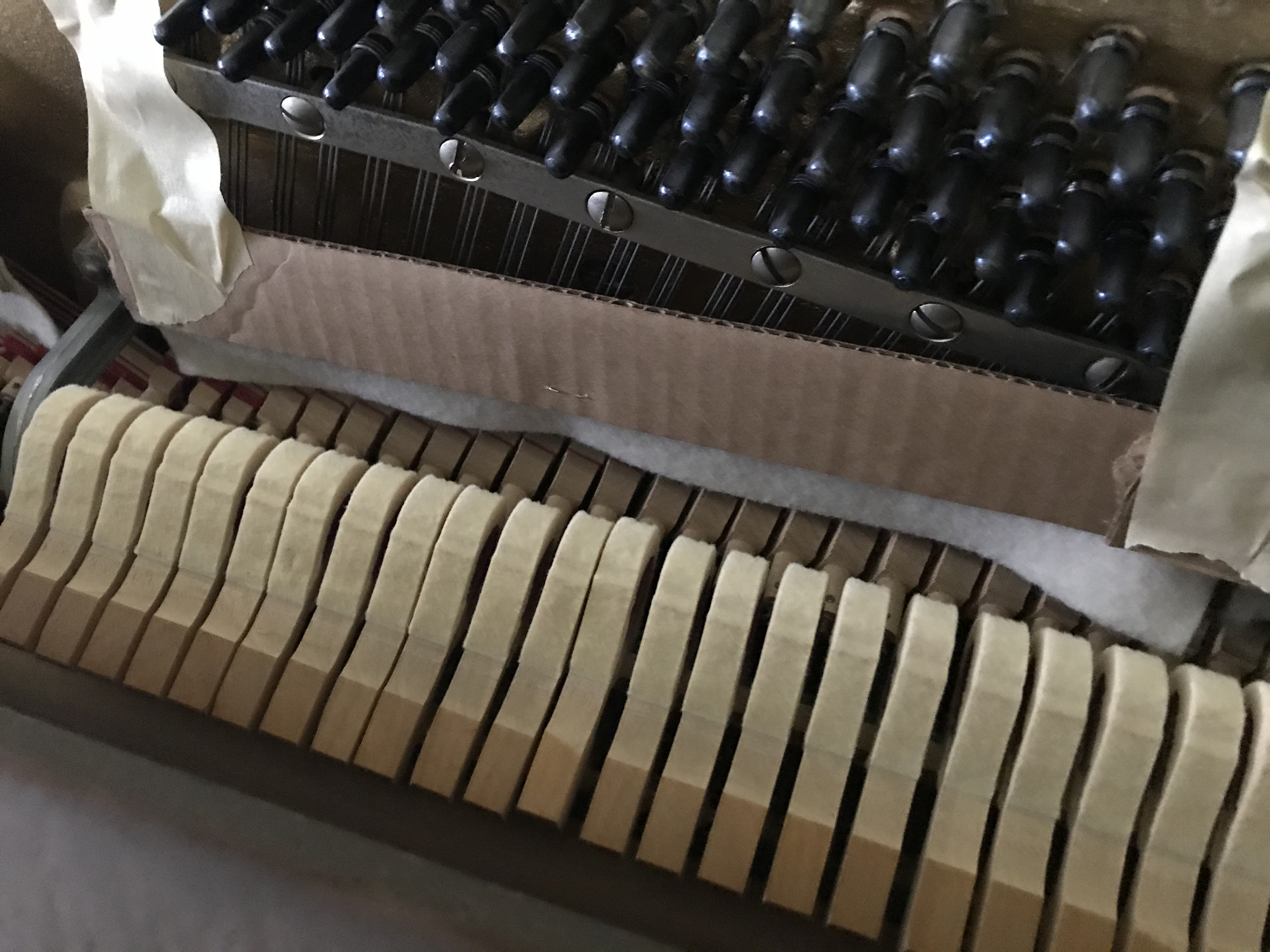
Next Steps
Now that I have the concept hashed out, I need to purchase sturdier materials. First, I will need wider felt strips so that the hammers do not contact the rail. I will also need either thin plywood or a metal bar to attach the felt to. Lastly, I will need to design a mechanism for raising and lowering the muffler rail. I will take inspiration from existing rails rather than reinvent the wheel.
How does it sound?
Even with a muffler rail made out of cardboard and staples, I think the resulting sound is pretty cool. Making the design more permanent with wider felt and sturdier construction will help remove the mechanical noise from the hammer strikes.
No muffler rail:
With prototype muffler rail:
Update - 12/26/2021
After determining that my plan would work, I needed sturdier supplies than cardboard. A quick Home Depot run later, and I was equipped with some sideboard trim wood, a small square-cross-section length of wood, and a larger supply of felt. The task at hand:
- Muffle the sound of the piano
- Muffler should be removable
- Piano sound quality should not be sacrificed
The simplest and most functional way to fix the rail into place was to use the existing features in the interior of the cabinet. I first cut and filed two lengths of the small square wood to fit in the slots on either end of the piano. Then I placed the trim wood and measured the distance from the top of the trim to the top of the hammers so that I could use the correct length of felt.
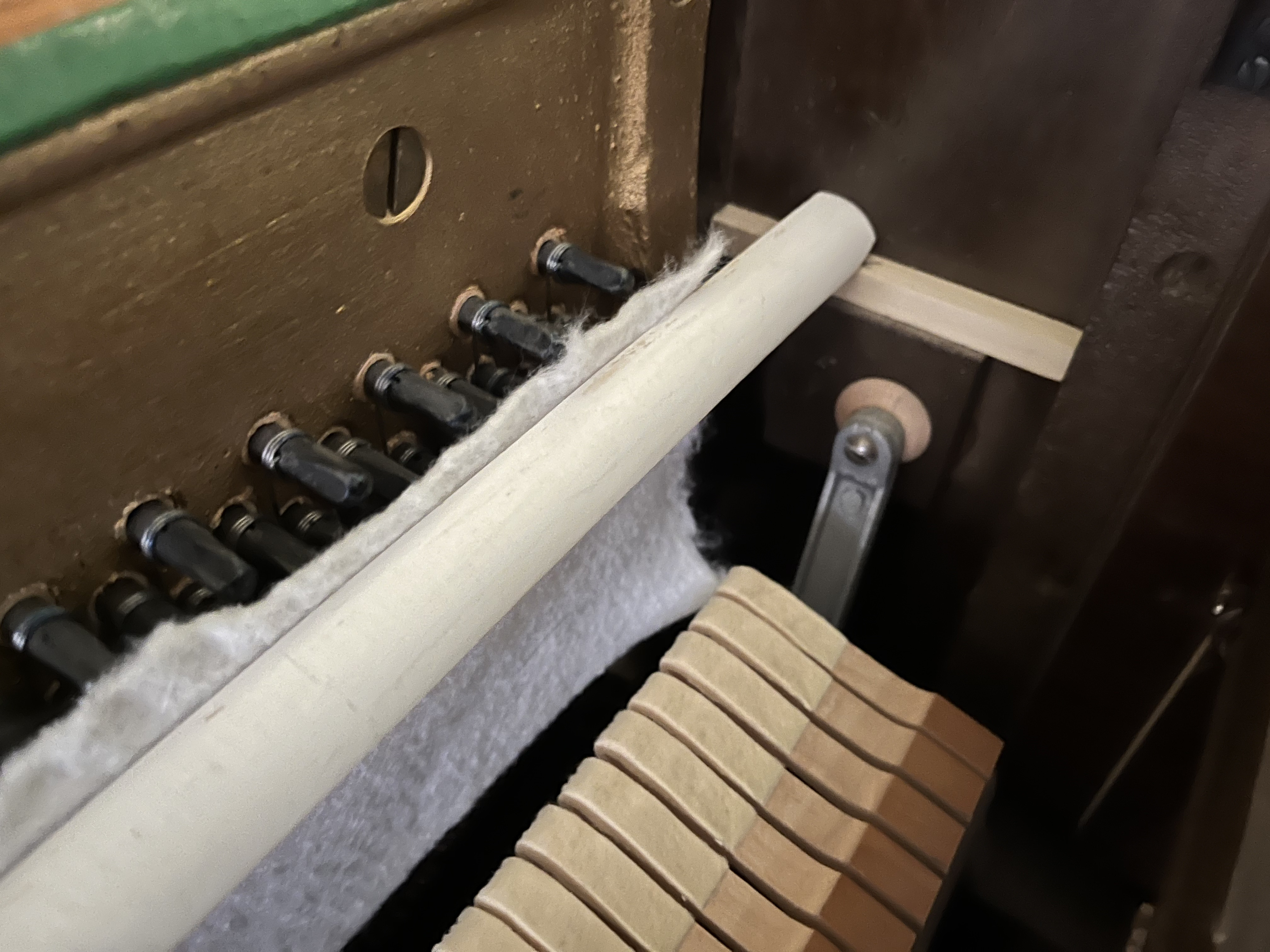
After sizing everything up in-situ, I made some pencil marks and hot-glued the felt to the muffler rail, and the muffler rail on to the side pieces.
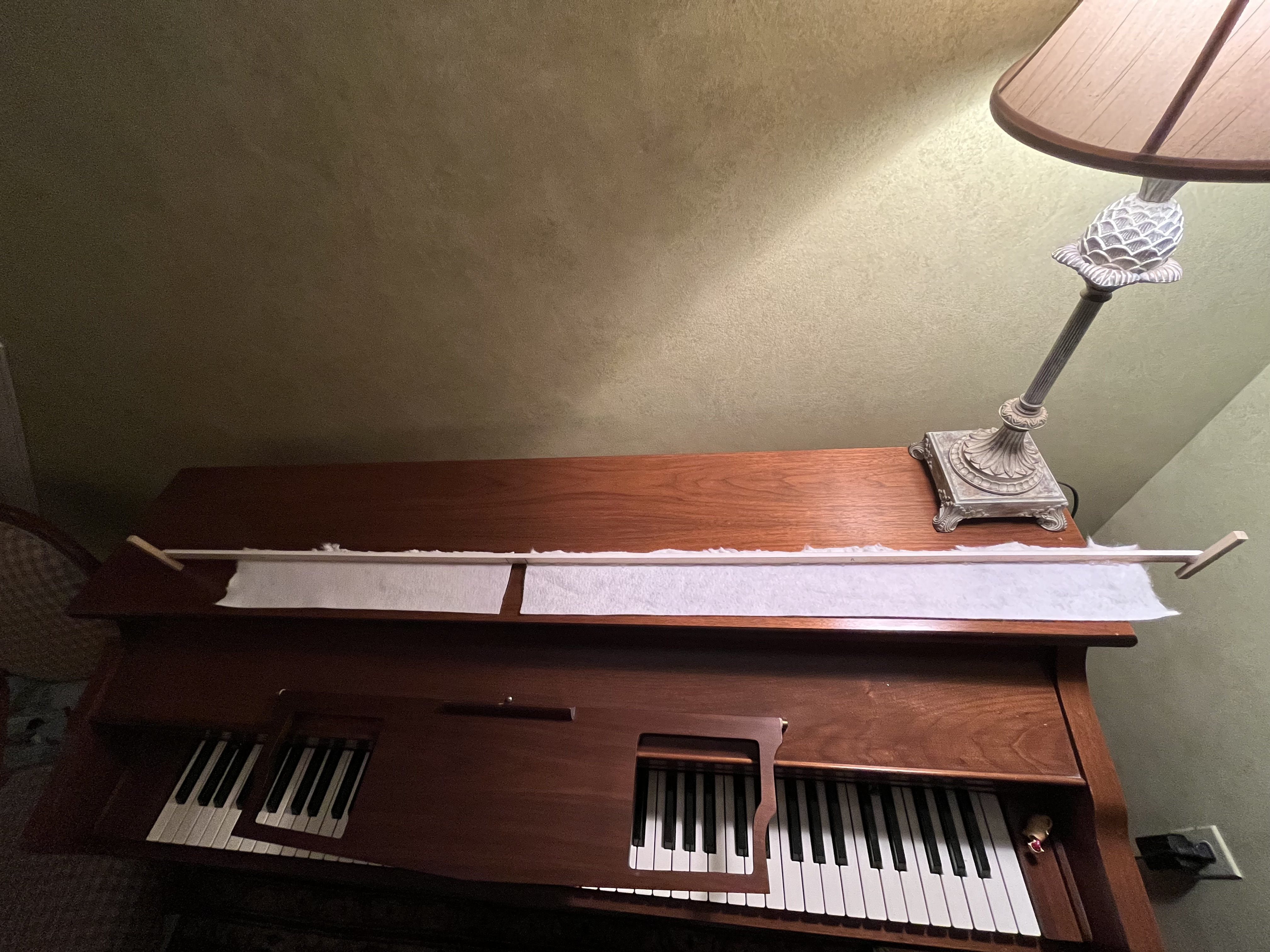
With a little bit of extra filing, everything slid smoothly into place in the piano cabinet.
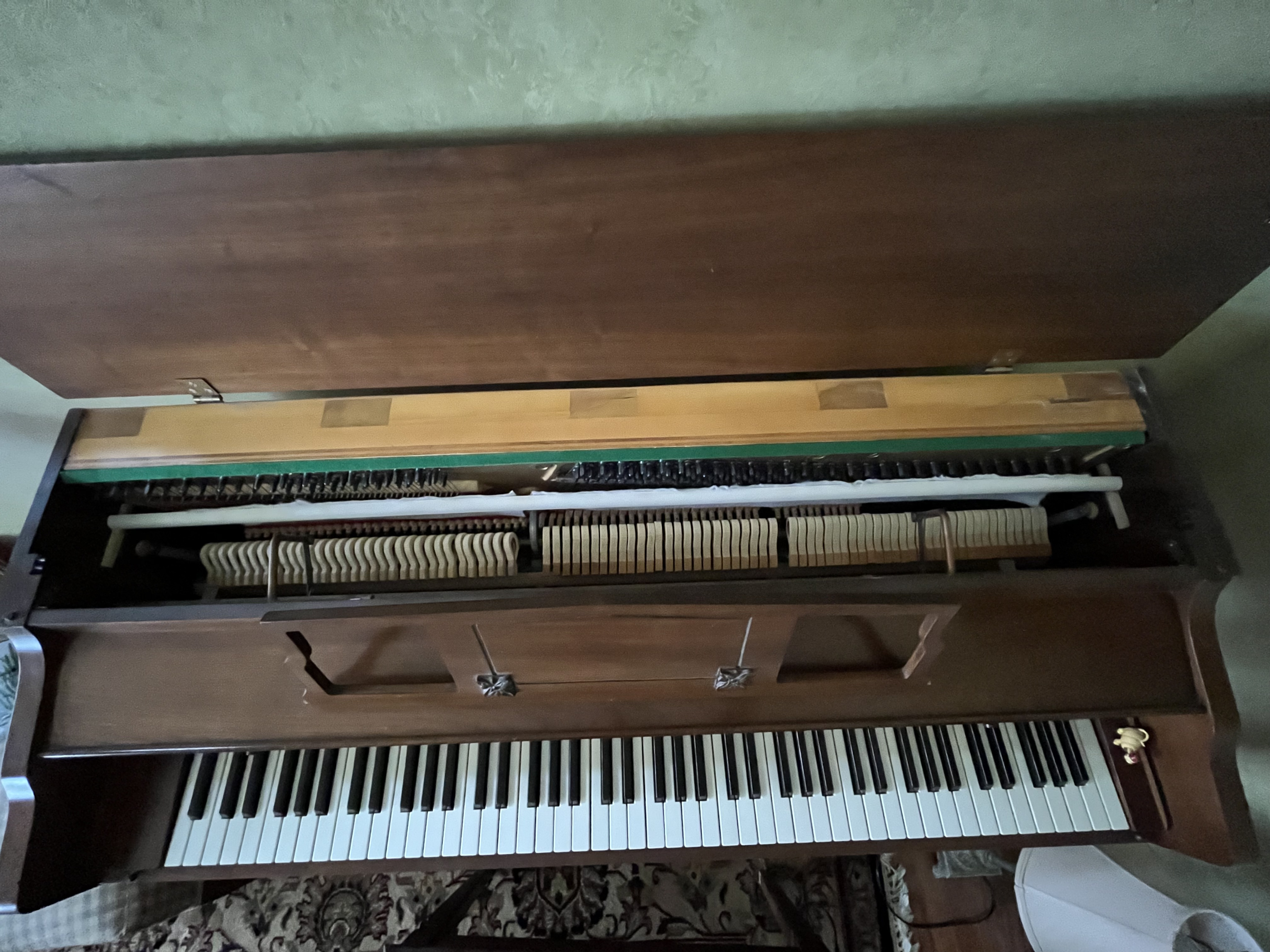
The result was very rewarding. The mechanical noise from the simple cardboard prototype was eliminated, and the piano volume amplitude was decreased. The tone is very simliar to an upright piano with a muffler rail (like a more upscale Yamaha), and there are some interesting harmonics that occur in the higher register if you listen closely. I did a head-to-head comparison with a little Christmas flair:




